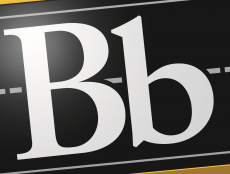
Articles
The Rising Cost of Textbooks Is Feverish–Student PIRGs Say Open Educational Resources Has the Cure
By Henry Kronk
February 08, 2018
The rising cost of college tuition has received a large amount of coverage over the recent months and years. But another cost has risen at an equally unnerving clip as public university tuition, which has tripled in the past thirty years. Course textbooks can cost students hundreds of dollars at the university bookstore. For years, students were able to mitigate those costs by buying online and used. But recently publishers have begun to bundle their textbooks with quizzes and homework protected by access codes online, forcing students to pay the full sticker price.
What’s more, the use of these access codes prevents students from selling their textbooks at the end of the semester.
Student PIRGs has followed textbook prices since 2004. Their recent report, “Open 101: An Action Plan for Affordable Textbooks,” (authored by Kaitlyn Vitez), details the means textbook publishers take to drive profits and what can be done to combat them.
Student PIRGs’ Forecast Is Dark and Financially Cumbersome
Since 2006, according to the study, the price of textbooks has risen by a factor of four times the rate of inflation. As Vitez writes, “The textbook market does not function like others, where companies compete for their share of the marketplace and the laws of supply and demand affect the price of the product. In contrast, students must purchase the materials assigned by a professor, who may or may not be considering price among other factors when assigning materials.”

Diminish the supply, while the demand remains consistent, and you can jack the costs. The Student PIRGS report found that, when it came to bundled course material (textbooks sold with additional resources behind a paywall), 45% of them were only available at the campus bookstore.
To reach these findings, the independent research group looked at forty public and private non-profit institutions. Of those, they selected the ten courses taken most often at each school. According to the report, “These top ten courses often form a “core” curriculum requirement for graduation, such as the requirement at liberal arts colleges that students take a lab science class, a social science class, and a writing class. We then cross reference that list with each school’s bookstore or book list and tracked the costs of required class materials across colleges in our sample.”
The cost of educational resources is a real problem. Student PIRGs’ 2014 study “Fixing the Broken Textbook Market” found that 65% of students do not buy all the educational material required by professors for reasons of cost. In a 2016, they discovered that $3 billion in financial aid had gone toward paying for textbooks in that year.
The Promise of Open Educational Resources
If bundled textbooks is the cause, then the research group says that increased competition and open educational resources (OER) are the cure. Simply by offering more widely recognized textbooks that can be found on Amazon or used, students could cut costs by over half. The average cost of a Bio 101 textbook, for example, costs $306. The average bundled cost is $337. On Amazon, the average cost of a used version is just $72.
OER adopts the true sense of open and seeks to make resources available to university students online at no cost. If American students were able to forgo bundled educational resources for OER instead, they would save an estimated $1.5 billion per year. The study explored one institution, Greenfield Community College in Massachusetts, which places an emphasis on OER. At the courses Student PIRGs investigated at GCC, students spent an average of $31 on materials per course. The average cost of course materials in the universities included in the study was $153.
OER Commons compiles open materials in a single database and they also provide significant resources for educators to help build courses and units with free, open materials.








No Comments